
We are broadcasting from Venice, Italy, the site of the Venice Biennale, the oldest and most prestigious international art exhibition, where this year’s theme is “All the World’s Futures.” The gathering has not been without controversy. In May, Venice shut down Iceland’s pavilion after the artist Christoph Büchel, working in collaboration with the Muslim communities of Venice and Iceland, turned a 10th century church that had been closed down for 40 years into a working mosque. Police claimed the art project was a “threat to public safety.” Last week, the Gulf Labor Coalition staged an hour-long occupation of the second floor of the Israeli Pavilion. The group has also protested the use of migrant laborers to build Guggenheim’s new museum in Abu Dhabi. We discuss past and present protests at the Biennale with Marco Baravalle, a Venice-based artist, activist and author who spoke at a panel discussion organized by the Gulf Labor Coalition called “Who Needs Museums and Biennales?” Baravalle also examines the impact of climate change and austerity on life in Venice.
Transcript
AMY GOODMAN: We’re broadcasting from Venice, Italy, the site of the Venice Biennale, the oldest and most prestigious international biennial art exhibition. The theme this year is “All the World’s Futures.” And in an introduction to the Biennale, the curator, Okwui Enwezor, writes, quote, “How can artists, thinkers, writers, composers, choreographers, singers, and musicians, through images, objects, words, movement, actions, lyrics, sound bring together publics in acts of looking, listening, responding, engaging, speaking in order to make sense of the current upheaval?” he asks. We’ll speak with Okwui Enwezor, the curator of the Venice Biennale, tomorrow.
This year’s Biennale has not been without controversy. Many countries have pavilions with art exhibits inside. In May, the city of Venice shut down Iceland’s pavilion in the Biennale after the artist Christoph Büchel, working in collaboration with the Muslim communities of Venice and Iceland, turned a 10th century church that had been closed down for 40 years into a working mosque. Police claimed the art project was a threat to public safety. Last week, the Gulf Labor Coalition staged an hour-long occupation of the second floor of the Israeli Pavilion. The group has also protested the use of migrant laborers to build Guggenheim’s new museum in Abu Dhabi. On Sunday, the Gulf Labor Coalition held a panel discussion called “Who Needs Museums and Biennales?” I spoke to one of the speakers after the event.
MARCO BARAVALLE: My name is Marco Baravalle. I’m a member of S.a.L.E. Docks collective of Venice.
AMY GOODMAN: Can you tell us what S.a.L.E. Docks is?
MARCO BARAVALLE: Sure. S.a.L.E. Docks is an independent space for arts and cultural production. We occupied the space in 2007. It was an abandoned salt warehouse, an ancient building in the heart of Venice. And when I say “we,” I mean a group of artists, art workers and activists, and also our students of the different university of art in Venice. And in 2007, the reason why we decided to occupy this ancient space—which is owned by the city, by the way, so the property is the property of the city—was because at the time we were witnessing a new development of the city, meaning that from being the traditional museum city that everyone knows—Venice with gondolas and an art history—we were seeing the fact that a new economy of contemporary arts and a contemporary culture were growing. And this was an extremely interesting development, but at the same time we had many contradictions and many, many kind of dark sides, let’s say—dark sides that are the fact that these investments were investments that were made, for example, by financial tycoons, by billionaires, that really use art as a kind of tool that can boost their status, or the fact that many of these very rich art institutions and foundations were and are using precarious labor and unpaid workers. And, of course, as people who are living in Venice and working in Venice, we needed a space that could become a critical point of view on all this development, which is, again, economic, social and political, and at the same time was a laboratory, so that we’re not only protesting, but that we also organize and produce culture, exhibitions, seminars, actions, publications and so on.
AMY GOODMAN: Can you tell us the history of Venice, in a nutshell, but for people who perhaps know it as this city of canals? But tell us about Venice.
MARCO BARAVALLE: Venice is a unique city and still is—I mean, I think what is really, really extremely unique in Venice, beside the fact that it is beautiful—and that’s, of course, banal, but it’s real—is the fact that the city was built in an incredible balance between the human people intervening in the environment and a respect for the environment. And this is something that went throughout all the history of Venice, which is a history that has more than 1,000—the 1,000th year now.
And, for example, if we refer to the present time, this history of a unique balance between human intervention and nature now is put in danger, for example, by the big cruise ships that you have may seen here passing inside the canal. These monsters of the sea, these huge ships that are really passing in front of the San Marco Square are posing a serious threat to the environment, to the lagoon, which is a very, very kind of delicate and unique environment.
And I’m mentioning this campaign because this tells you some more about what we do in S.a.L.E. Docks. We are not only focused on art and art things, but we are an activist space in nature with other activist realities, with other social organization and movements in Venice. So, for example, we are also very much committed to the struggle against big cruise ships, which is now very crucial in Venice, and I would say it’s one of the things that more is posing a threat to the history of this city.
AMY GOODMAN: And are you concerned about climate change here?
MARCO BARAVALLE: We’re pretty much concerned about climate change. Of course, Venice is impacted by climate change. Not only Venice, but it’s mainland. For example, you come from the U.S. Not later than a few weeks ago, there was happening near Venice, close to Venice, a tornado, a tornado which we usually see in the U.S. and we don’t see so often here in Italy or in Venice. And this was, of course, only a symptom, but a clear symptom, of climate change effects, of climate change happening. It was extremely destructive and extremely, I think, tragic for Venice.
But, of course, the other issue is that of the raising of the average of the sea level. We are in a lagoon. We are very close to the sea. The sea enters the lagoon. So, in a way, if all the prediction about the raising of the sea levels are real, we must be worried. We must be worried because we could be one of the first cities to go underwater, more than we already experience high tides and so on. And it is a city of canals because, basically, Venice is now the result of a few of different islands that were linked through bridges. That’s why, of course, he had gondolas and boats and so on, because in the first years of Venice, Venice was not as you see it now, was not different islands linked, but there were islands without links, without bridges. So it is really an archipelagos, let’s say. That’s how Venice kind of was founded, and it developed.
AMY GOODMAN: And with austerity sweeping the continent, of course, in Greece and Spain, how does that affect Italy? And how does that affect the Biennale, the Venice Biennale, which is so well known for this massive exhibition of art that is—also has a lot of support from the state? In the United States, conservatives might be listening to you and saying, “I agree with his critique. The Biennale shouldn’t be supported. The arts shouldn’t be supported.”
MARCO BARAVALLE: This happened in Italy even before austerity. So our politicians didn’t need austerity or crisis to not support arts. This is unfortunately a typical feature of Italian politics, especially during the 10 years of Berlusconi government. It was famous, the statement of one of his minister of culture, who said, “You don’t eat with culture.” And the consequence is, if you don’t eat with culture, we are not funding it. So, unfortunately, apart from such big and important international events and traditional events like the Biennale, the public funds for art are almost non-existing in Italy.
Concerning the austerity, of course, we are a Mediterranean country. That means that we are deeply affected by crisis. And we are on the edge, really, of austerity, of austerity policies, which were hitting Italy very hard, not as hard as Greece, but we probably will be the next in line, meaning that, of course, the troika and the so-called European institutions asked to the governments of Italy brutal reforms, reforms that really are going to the direction of cutting—of further cuttings to welfare, to culture, to environment and so on. And unfortunately, we must say that both right-wing and leftist politicians in Italy really obeyed, were really completely obedient to this command of austerity of the troika.
Speaking of austerity, another huge problem is housing policies, for example. The private market of houses and of rents in Venice is completely crazy. It’s out of control. So, for example, you don’t see—if you come here, just walk from Rialto to Piazza San Marco, you don’t see it. But there are networks of people who occupy apartments that are very, very large. I mean, there is an organization which is called ASC, Assemblea Sociale per la Casa, Social Assembly for Housing. And this is a network of more than 50 occupied apartments in Venice. And it puts together migrants, young people, students, but also Venetian families, families that before austerities could not—I mean, could pay the rents, and after austerities and with the crisis, they cannot afford to pay these rents anymore.
AMY GOODMAN: Can you tell us the history of the Venice Biennale, what it means?
MARCO BARAVALLE: It is a very complex history. The Venice Biennale was the first biennial of the world, was founded in 1895. And since then, it really—it developed out of the model of the word “exhibition,” the exhibition of the 19th century, which all the different nations were bringing their last technological discoveries and so on. And it took this model from the word “expo” and basically adapted to the arts. So that’s why the Biennale was organized with national pavilion and still is organized with national pavilions. And the Biennale has a very complex story of political and economic ties with the city, too. Of course, there is all that official history of the Biennale, but there is a very strong counterhistory and counternarrative of the Biennale. We spoke today about the protests of 1968, protests that of course were happening in Venice and touched the Biennale, too.
AMY GOODMAN: And why were the protests happening in Venice?
MARCO BARAVALLE: Because it was 1968, and so there was basically a world revolution going on. Of course, it was a big time for social movements all over the world, and Venice was no exception to this stream of protests. And the protests touched the Biennale, too. The Biennale was accused of basically repeating a colonialistic vision of the world by having these national pavilion hosted, of being a nationalistic event, very, very much tied to the official politics of the countries that were hosted here. And the interesting thing is that after these protests, the Biennale basically started a very radical institutional reform, because it needed to be a more democratic—a more democratic institution. At the time, the statue of the Biennale was the statute that was written directly by the fascists, by Mussolini. So it was still that kind of institutional structure that the Biennale had.
And nowadays, a collective like S.a.L.E. Docks or present-time activists working in Venice are keeping to approach the Biennale from a critical point of view. Of course, problems are pretty much different from those that you could find in 1968, but you still have many different problems when coming to such an art event. I’m just mentioning two of them, which we touched in today’s discussion in the Gulf Labor panel.
First of all, the problem of labor. So, the Biennale is a very rich institution. Lots of money are invested both by private and public institution here. And the Biennale generates a large amount of labor, but this labor is precarious or is largely unpaid. There is a problem, for example, with university internships. We don’t know how many university interns work for free, not for the Biennale directly, but for all the linked exhibitions that happen in the city.
Second problem is the problem of the relationship between the exhibition and the city. So we are speaking of the very famous creative city. And how does the Biennale work as the Venetian version of the creative city policies. Basically, these 100 or so events that you have in town pay very high rents to be here in town. And to who does this money go? They go to the pockets of the landlords of the city. It goes to the pockets of the biggest real estate owners and actors in the city. So that’s why we see a paradox. And S.a.L.E. Docks is trying to intervene within these contradictions, for example, by creating an alternative model of a pavilion, in which it is basically the city and the people working for the city, the art scene of the city, which takes advantage of an event like the Biennale and in which the labor is fairly paid. So, this is only one example of what we’re doing here.
AMY GOODMAN: Marco Baravalle, a Venice-based artist with the group S.a.L.E. Docks, speaking here at the Venice Biennale. This is Democracy Now!, democracynow.org, The War and Peace Report. When we come back, we’ll be joined by the president and curator of Creative Time, which is holding a summit at the Biennale here today through Wednesday. We’ll be back in a minute.

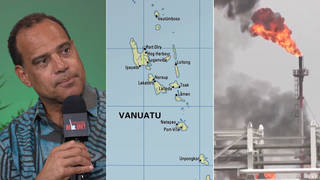
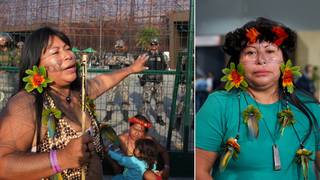
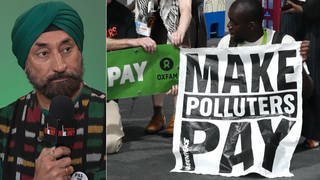
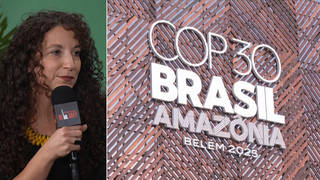





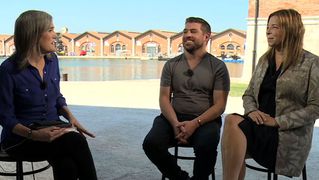
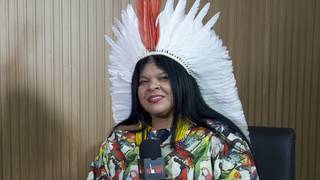
Media Options